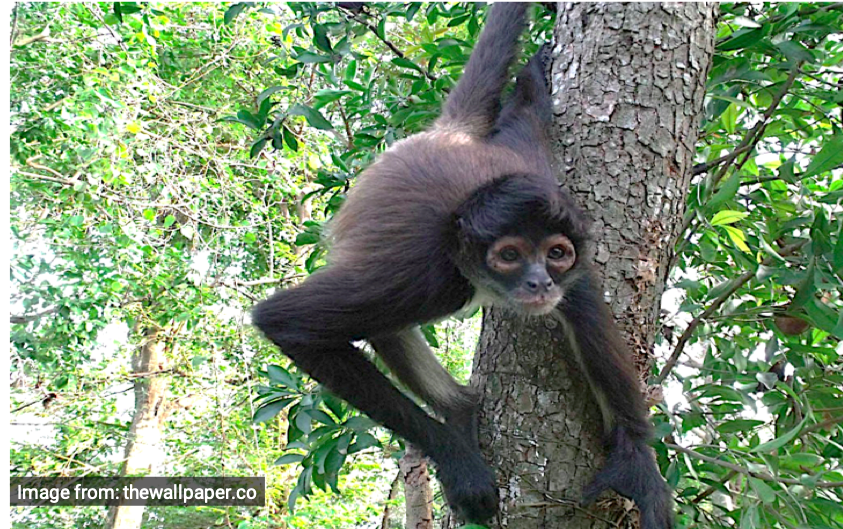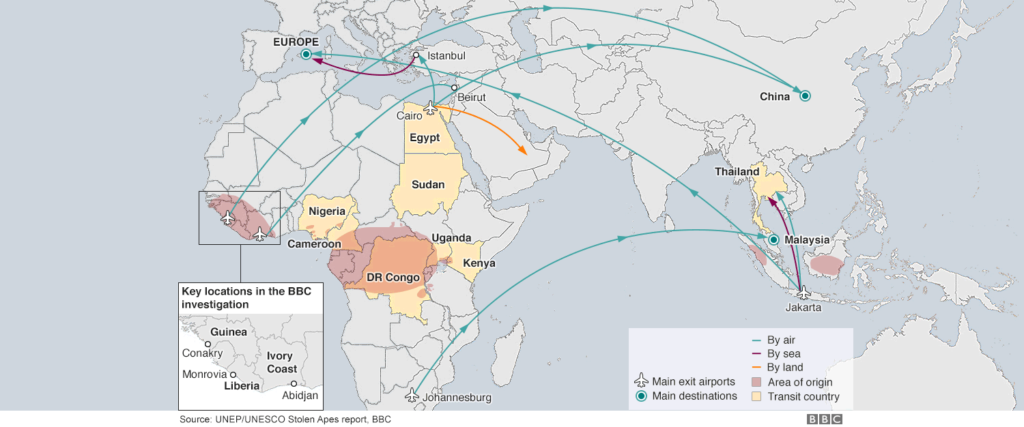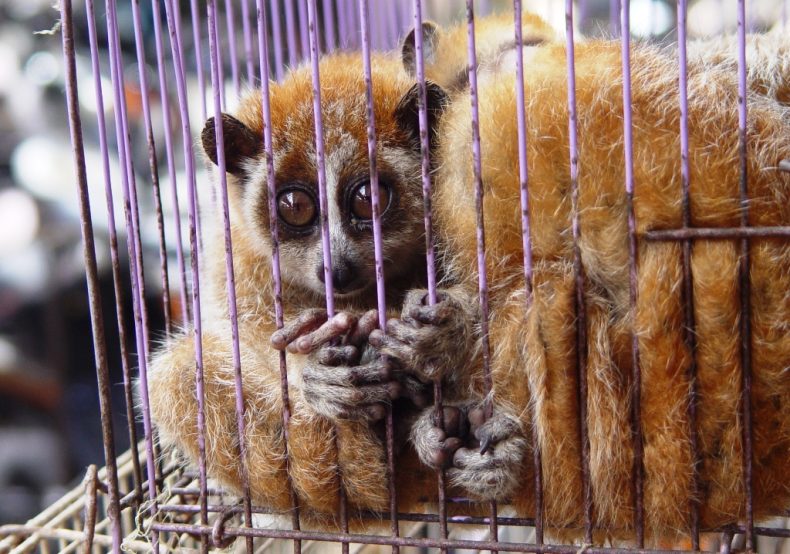
Malaysia has been named as a global hub for wildlife trafficking – a sinister crime threatening the lives of innocent animals.
A newborn baby gibbon, held closely in the arms of its mother and surrounded by its entire family, thought his world was going to be fulfilling from that moment forward. Little did it know, a poacher was coming to put its small perfect world to an end.
Its mother was shot, along with the other adults who were in the way of the poacher. Then, with all of them dropped dead, the poacher grabbed it and before long was put inside a small wooden crate.
The crate was attached to a few more crates where other baby gibbons were suffering the same cruel fate.
There was food inside the crate for it to eat, but the tiny space was soon filled with litter and its own faeces. Missing its mother and craving milk, it started to scream – a low painful, screeching sound people often mistake, or would rather believe, to be a sign of joy.
After the shuffling of papers and signing of documents, a buyer was now waiting for a “package” to be delivered.
The baby gibbon, unable to resist or stage a simple “jailbreak”, was drugged and its tiny body was stuffed inside a shoe box.
It was suffering, but no one seemed to care or tried to help. It laid inside the box, half-conscious, and felt as if it was being carried on a moving plane to an unknown destination.
Hours later, the plane landed. Eventually, the man who had been holding him captive opened the box and took him out.
Here he was, in a country which is known as a global hubs for wildlife smuggling – Malaysia.
Malaysia as a hub for wildlife trafficking
Malaysia is recognized as one of the top ten wildlife trafficking hubs in the world – where protected and endangered animal species are being smuggled in (transit) and out of the country (source) through ports and airports.

Source: BBC News
The country has been combating domestic and international traffickers for years due to the presence of organized crime groups. These groups work neatly, bringing in animals poached and hunted from the wild, consolidating them, before sending them out again with consignments listing Malaysia as the point of origin.
They make a fortune out of this criminal network, while the creatures who fall victim to the trafficking continue to suffer. Some die en route, some meet worse fate when their body parts are cut off for humans’ pleasure.
This illegal trade evidently goes beyond borders and spans across continents, but not many Malaysians are aware of this deep-rooted problem because it is not visible to the naked eye.
The heart-wrenching truth is, illegal wildlife trade is an organized and profitable criminal activity, and wildlife is one of the most trafficked after drugs, weapons and humans. One might say that it is also a form of modern-day slavery as it involves exploitation, violence, and threats to the animals’ lives.

From 2012 to 2016, the Wildlife and National Parks Department (Perhilitan) recorded at least 235 cases of wildlife crime.

Pangolins, the world’s most poached mammals, were among the seized creatures, alongside the white-rumped shama, red-eared slider, baya weaver, and many others.
The number keeps on rising.
In 2017 alone, Perhilitan officials handled 3,000 cases of wildlife trafficking and rescued animals belonging to around 150 species. Among them were Malayan tigers, leopards, elephants, tapirs, mountain goats, and deer.
23 ivory tusks valued at 275,000 ringgit, and six sacks containing 300.9 kg of pangolin scales worth 3.9 million ringgit were found in one cargo warehouse at Kuala Lumpur International Airport (KLIA), while another 700 kg of pangolin scales worth 1,500 ringgit on the black market were seized a few months earlier before.
Hong Kong also seized more than 7,200 kg of ivory tusks shipped from Malaysia in the same year, continuously painting an ugly picture of Malaysia as a major transit point.
The numbers shown in every seizure are alarming, and there is no sign that the traffickers are slowing it down any time soon.
Where are the laws?
Criminal Justice Response to Wildlife Crime in Malaysia links the pandemic wildlife trafficking to the absence of arrests of high-level individuals in connection with the reported cases.
In many of the operations by Perhilitan and wildlife rights activist groups, only small numbers of offenders, mainly the couriers who play an insignificant role in the bigger crime network were arrested and convicted, while the masterminds remain free and undetected.
Malaysia may now be keen to battle this sinister web of crime to its core, but this can only be done with integrity among the officials.
This is definitely easier said than done because just last year, two ex-Custom officers were sentenced to five years in jail after they were caught in possession of 31 Black Spotted Turtles Geoclemys hamiltonii in 2016 while they were still authorized officers.
The turtle species has fallen victim to illegal international commercial trade for years.
This small victory is only a fraction of this cancerous “tradition” of authorities, including airport staff, abusing powers bestowed upon them to safeguard the country’s border.
And who’s to say that the convicted are the only corrupted officers in the whole supply chain?

With the rampant poaching and illegal hunting all over the deep forests, a shoot-on-sight policy mulled in a war against poachers to save Malayan tigers (Ops Belang Campaign) is taking Malaysia a step closer towards ending the illegal trade in the country, and hopefully further.
But that alone isn’t enough.
Malaysia’s role as a hub for wildlife trafficking is widely known today, and wiping the slate clean requires actions beyond protecting the animals in the forests.
The entire crime network has to be cracked down upon so that the helpless baby gibbon alongside thousands of other wildlife can be rescued before they too die through no fault of their own.
(The second part of this series will be published soon.)

